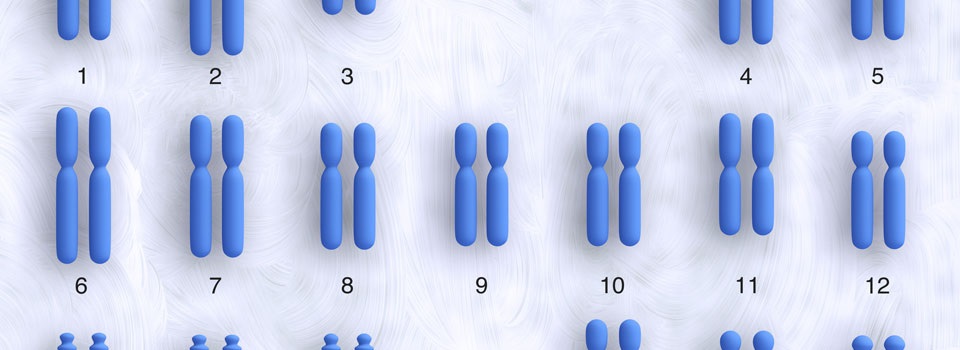Association Studies
The occurrence together in a population of two more more characteristics that occur more often then chance would dictate. In genetics, the occurrence of a trait or disease with a particular genetic marker.
Bases (nucleotides)
One of four chemicals (Adenine, Cytosine, Guanine and Thymine) that make up DNA.
Chromosome
Structures in the cell that carry our genetic material, in the form of genes.
Coded
A way to attempt to preserve a person's confidentiality. For example, instead of using a person's full name, their identity could be "coded" to a number, to make it somewhat anonymous. The researchers would be able to "uncode" this information if they needed it, because they would know whose sample belonged to which code.
Confidential
A person's medical information/test results are used and kept restricted, in an attempt to prevent access to them by other individuals (such as employers and insurance companies). As with all research studies, unintentional "breaks" in confidentiality can occur. Additionally, researchers and staff are not allowed to discuss any details about participants with those not involved with the research project.
DNA
DNA is an abbreviation for deoxyribonucleic acid. DNA is made up of chemicals, arranged in a specific order, or sequence, which makes up genes.
Electronic medical record
A computerized version of the hard-copy medical record. At Marshfield Clinic sites, the electronic medical record contains all information from about 1994 to the present. Information about diagnoses, medical appointments and phone calls, letters, and test/procedure results are all in this record. All Marshfield Clinic sites are linked together electronically, and any care providers in this Marshfield Clinic system can access this medical record information if they have been given access to a computer.
Encrypted
Similar to "coded" in that it is a way to attempt preserving someone's confidentiality. Encrypting is supposed to be more secure, in that not all researchers would necessarily have access to the exact code or method of encryption.
Gene
Genes are the "blueprint" for growth and development. Genes are made up of DNA.
Genetic
Genetic is a term used when something is based on or determined by genes.
Genetic code
Exact order (or sequence) of DNA, which makes up genes.
Gene alterations
Gene alterations are natural changes in the sequence of chemicals that make up DNA. Everyone has gene alterations. Gene alterations can sometimes cause disease (mutations), and sometimes can be normal variants (polymorphisms).
Gene mapping
See Human Genome Project entry.
Genome
The complete DNA sequence, containing the entire genetic information of an individual, population or a species.
Genotype
Genetic information for an individual (vs. "phenotype," which corresponds to the clinical characteristics ). Genotype is the information about the gene form itself.
Human genome
The human genome is the complete DNA sequence, involving all genetic materials that make up humans.
Mapping of the human genome/Human Genome Project
The Human Genome Project is an extensive research effort to determine the order in which human DNA is arranged to better understand the contributions of this arrangement to human health and diseases. The Human Genome Project was completed in April 2003.
Markers
Also known as a genetic marker. It is a segment of DNA at a known physical location on a chromosome. A marker can be a gene or a section of DNA with no known function. They can be used to track the inheritance pattern of genes that have not yet been identified, but whose approximate locations are known.
Medical research
Medical research is the formal, experimental study of human health and disease processes. Medical research may or may not yield results.
Mendelian Inheritance
The manner in which genes and traits are passed from parents to children.
MESA
Marshfield Epidemiologic Study Area population. Includes a 24-zip code region in central and northern Wisconsin.
Microchip
Similar in shape and size to a computer chip, this can contain a person's DNA. Using a microchip, researchers can study a person's genotypes at different places in the genes very quickly and easily.
Multifactorial Inheritance
The type of inheritance show by traits that are determined by a combination of multiple factors, such as genetic and environmental.
Mutation
Alteration in the sequence of DNA, which can potentially lead to health problems.
Pharmacogenetics
The study of genetic changes as related to their responses to drugs/medications in humans or in laboratory organisms.
Phenotype
Clinical information and characteristics about an individual (vs, "genotype," which is genetic information). Phenotypes are the observable traits of an organism, such as hair color, weight, or the presence or absence of a disease.
Polymorphism/ Polymorphic marker
A common variation in the sequence of DNA among individuals. Polymorphisms do not lead to disease.
Presymptomatic test
A way to find out a person's genetic predisposition for a specific disease before they might be showing any symptoms of that particular disease.
Sequence
A way to look at the genes by "spelling" out each base pair of DNA in correct sequence for the entire gene. Many genes have thousands of base pairs each.
Sequencing
Determining the exact order of the base pairs in a segment of DNA
SNP
An abbreviation for "single nucleotide polymorphism;" is a small change in a sequence of DNA. In fact, it involves only a single chemical change. SNPs by definition do not cause health problems for people that have them, but they can be useful when studying diseases in the general population, as they are natural variations that we all have.

